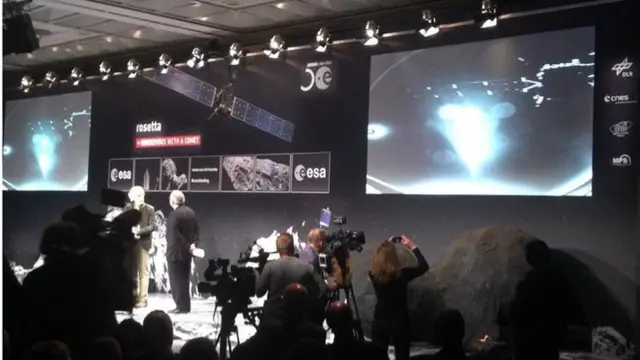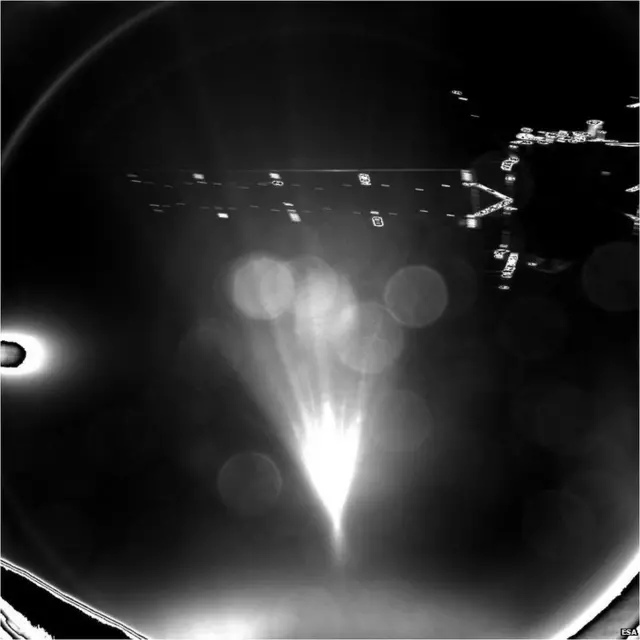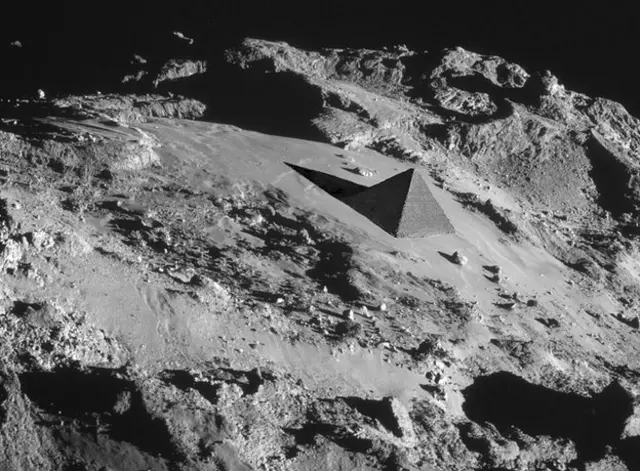Comet namesakes speakpublished at 14:51 GMT 12 November 2014
Klim Ivanovych Churyumov, one of the discoverers of 67P says: "Astronomy is the most important science for civilisation."
Co-discoverer Svetlana Ivanovna Gerasimenko said she likes the comet "very much" now that she can see it up close.
"It reminds me of a boot," she said.


